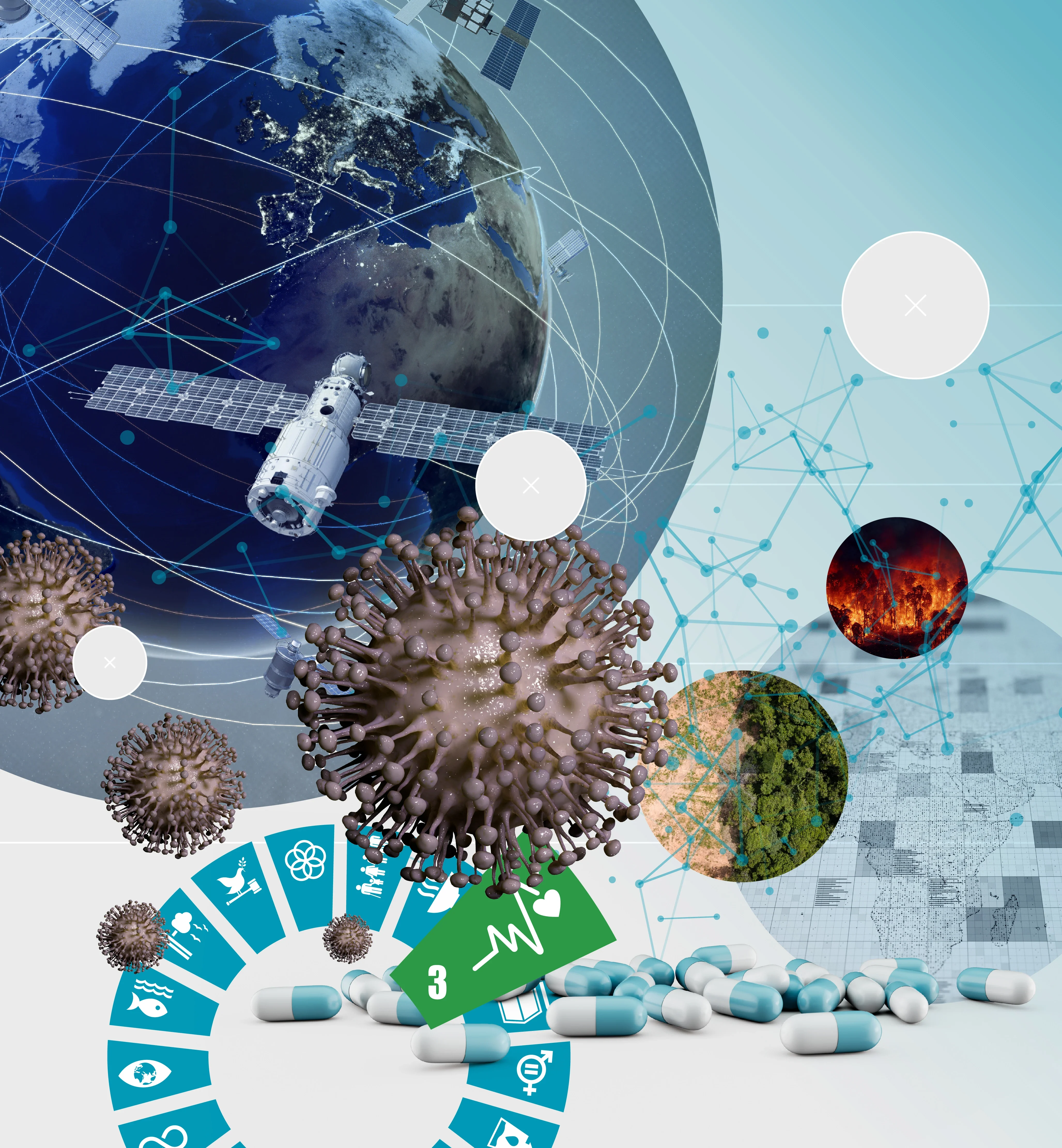Studies suggest that over 50 per cent of known human infectious diseases may be exacerbated by climate change, with a significant proportion of emerging pathogens being zoonotic in nature. Vector-borne diseases such as dengue, chikungunya and malaria, as well as water-borne diseases such as cholera, are particularly sensitive to environmental changes. The displacement of human and animal populations due to climate-related events further complicates disease dynamics and creates new pathways for disease transmission and outbreaks.
The increasing frequency and intensity of pandemics is largely driven by human-induced changes such as land-use alterations, agricultural expansion and climate change. Consequently, incorporating environmental and animal health indicators into disease-surveillance systems is essential for comprehensive risk assessment. The "One Health" approach, which emphasises the interconnectedness of the health of humans, animals and the environment, is of central importance in this regard, and the Surveillance Outbreak Response Management and Analysis System (SORMAS) is a space-based initiative that demonstrates the potential to integrate animal and environmental data, and provide real-time monitoring based on satellite information, enabling a holistic view of health risks.
The One Health Joint Plan of Action, a global framework for collaboration on the One Health approach, outlines an approach to integrating Earth-Observation (EO) data into vector-borne disease surveillance systems. Initiatives in North Africa exemplify this approach by defining "ecoregions" and prototyping an EO-based vector-borne disease-surveillance system. Collaborations with agencies like the European Space Agency (ESA) or global coalitions like the Group on Earth Observations, and the development of prototypes in platforms like Google Earth Engine are key next steps. These efforts underscore the potential of EO data to revolutionise disease surveillance by providing precise, real-time environmental data that can inform public health strategies. By integrating satellite data into health-surveillance systems, we can better predict and respond to disease outbreaks caused by environmental changes.
In resource-limited settings, access to emergency health services is a major challenge. Remote-sensing data plays a critical role in optimising healthcare access. In Madagascar, for example, a significant proportion of women live more than two hours away from maternity services, with many lacking access to fully functional facilities. Remote sensing and geospatial modelling can create maps that highlight areas of vulnerability, enabling targeted interventions and facility upgrades. Similarly, in Nepal, nationwide surveys on snake bites have led to the development of probability maps for snake-bite incidents and accessibility maps for hospitals with anti-venoms. These maps are invaluable tools for health ministries and stakeholders, facilitating informed decisions on resource allocation and intervention strategies. The integration of geospatial data, population distribution and infrastructure mapping through ESA's Earth Observation missions exemplifies the transformative potential of space technology in health planning.
Data governance is a critical issue that intersects with numerous global concerns, including national security, human rights, environmental sustainability and economic stability. As data becomes a central pillar of our technology- and information-driven society, international data governance frameworks are essential. The fragmented nature of the global data ecosystem, characterised by differing ideologies on data management across regions, necessitates cooperative governance. Space systems produce vast amounts of data, particularly from Earth-observation satellites, which are crucial for linking health, environment and climate. Effective data governance will ensure the responsible and sustainable use, storage and dissemination of data, safeguarding the benefits of the digital revolution while mitigating its risks.
Space technology plays a critical role in supporting the UN Sustainable Development Goals (SDGs), particularly SDG 3 (Good Health and Well-being). Satellite-based tools for investigating aquatic ecosystems, rapid mapping of disaster-affected areas and collaborations with space agencies highlight global efforts to use space technology to improve health. Initiatives like the ESA International Charter Space and Major Disasters, or the UN Platform for Space-based Information for Disaster Management and Emergency Response (UN-SPIDER), exemplify how space-based solutions provide real-time support in crisis situations, enhance telemedicine, improve rescue operations and ensure effective communication. Human space flight also contributes to medical research, providing unique insights from microgravity experiments and astronaut-health management.
The integration of space technology and global health represents a frontier of opportunities to address climate-sensitive diseases, optimise access to healthcare and ensure robust data governance. Interdisciplinary collaboration, capacity-building, and forward-looking technological advances are essential to realise the full potential of space technologies in achieving the Sustainable Development Goals. Synergies created by bridging the gap between the space and health communities will lead to innovative solutions and a healthier, more resilient global population.
This contribution is produced in collaboration with the Geneva Digital Health Hub and based on their panel discussion ‘Space and Global Health’ at the Geneva Digital Health Day, 2024.

















